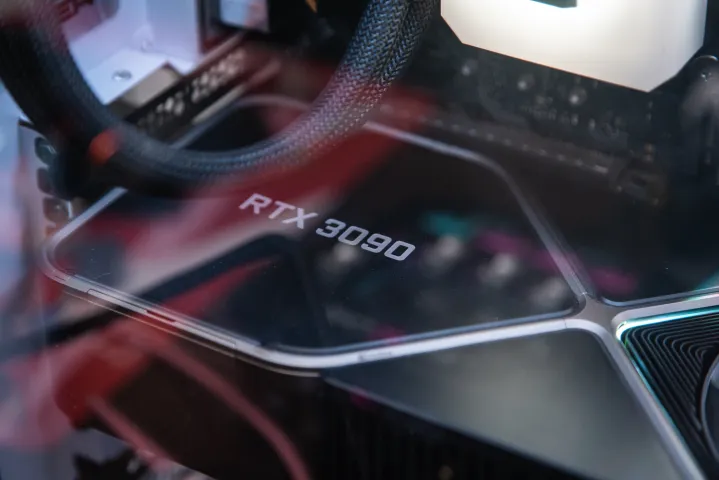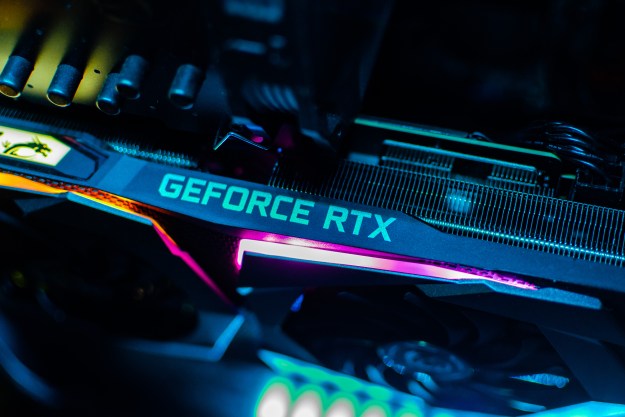During the Apple Spring Event 2022, the company announced the new M1 Ultra processor. It’s a system-on-a-chip (SoC) that basically stitches together two M1 Max chips to achieve double the processing cores across the board. And Apple made some big claims about how the 64-core GPU stacks up to the competition.
Here’s the claim from Johny Srouji, Apple’s senior vice president of hardware technologies: “M1 Ultra delivers faster performance than the highest-end GPU available while using 200W less power.”

As usual, Apple didn’t name names, but you can see from the relative performance chart above that it’s comparing the M1 Ultra to an RTX 3090. Apple’s claim about efficiency is probably true and then some. We’ve seen the incredible efficiency of the M1 family time and again. But more powerful? That’s unlikely.
I haven’t had the chance to test the M1 Ultra yet, but I have a good idea about how it will perform. It’s just two M1 Max chips stitched together, and assuming Apple’s interconnect is up to snuff, it should provide around twice as much performance. Even then, it’s not close to the RTX 3090.
There are some applications where you may find similar performance. I have limited data — MacBook Pro versus the RTX 3090 isn’t exactly a popular comparison — but the M1 Ultra could come close to the RTX 3090 in apps like Premiere Pro. The graphics card is far from the only component that’s relevant in Premiere Pro, but it’s still something for the M1 Ultra.
Move onto a more GPU-bound application, and the M1 Ultra gets put back in its place. The M1 Pro finished the BMW benchmark in Blender in three minutes and 26 seconds. The RTX 3090? 17 seconds. Even assuming that the M1 Ultra has four times the GPU performance as the M1 Pro — it has four times as many cores — it’s not even in the same league as the RTX 3070, let alone the RTX 3090.
And don’t even think about gaming. In Fortnite, the M1 Pro managed just shy of 60 frames per second (fps) at 1080p with the High preset. Quadruple that to be favorable to the M1 Ultra, and you have 240 fps. The RTX 3090 manages 260 fps, and that’s while being vastly CPU limited at 1080p. I’ve actually recorded higher results with the RTX 3090 at 1440p.

Keep in mind, too, that Apple is making this claim about an integrated GPU. I’ve absolutely seen integrated GPU performance beyond my wildest dreams with the M1 family, but still, it’s nothing that holds a candle to a full desktop GPU. Apple doesn’t have a secret sauce, and an SoC that can fit in your hand is not going to outperform a 15-inch GPU with its own cooling apparatus. And Apple needs to fit the rest of the PC on the M1 Ultra, too.
We won’t really know if the M1 Ultra can outclass the RTX 3090 until it’s here, but you shouldn’t count on it when considering a Mac Studio pre-order. I’m rooting Apple here, too — if the M1 Ultra can outclass the RTX 3090, I will eat my words with a smile until the plate is clean.
I don’t imagine I’ll have to do that, though.
Editors' Recommendations
- Don’t buy the RTX 3060 in 2024
- Nvidia finally made a tiny RTX 4000 graphics card (but you probably don’t want it)
- Nvidia’s monstrous RTX 4090 is 2 to 4 times faster than the RTX 3090 Ti
- The Mac Pro refresh is coming. So why wasn’t it at Apple’s event today?
- Nvidia RTX 3090 Ti gets an unprecedented $1,000 price drop




